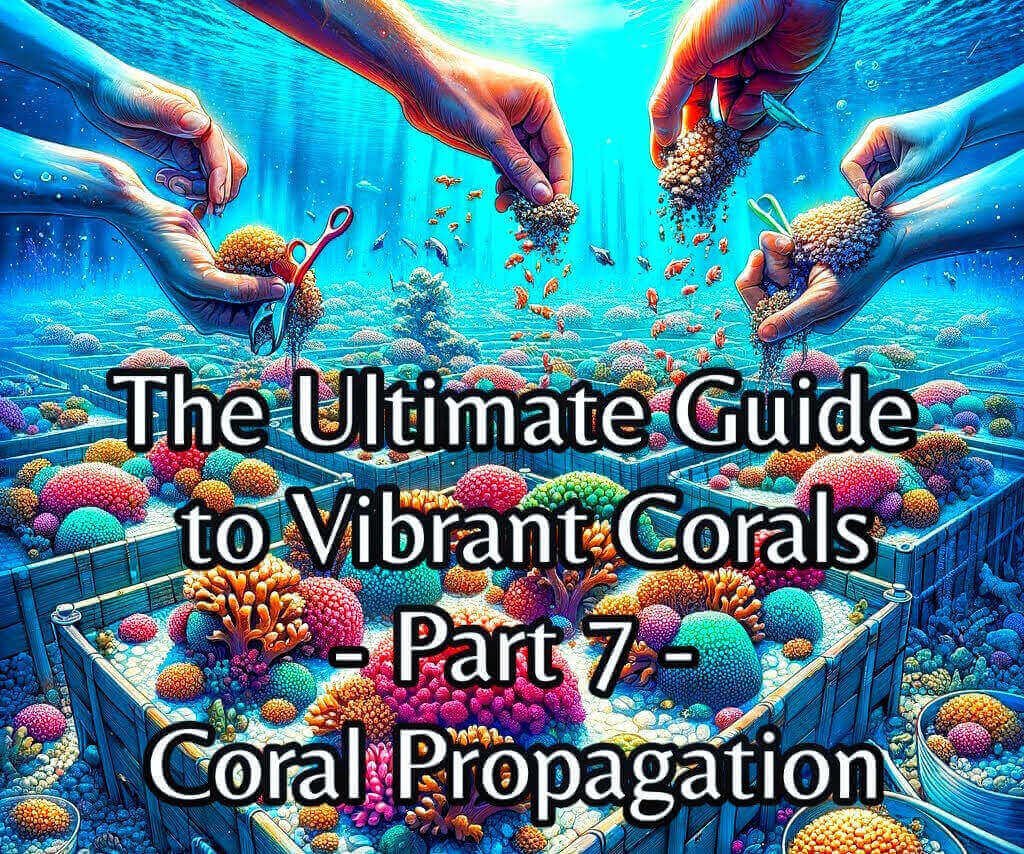The Ultimate Guide to Vibrant Corals – Part 7 – Coral Propagation: Cultivating a Sustainable Reef
Welcome to Part 7 of “The Ultimate Guide to Vibrant Corals” series. In this segment, we’ll explore the fascinating world of coral propagation and how you can contribute to the sustainability of your reef aquarium by cultivating corals through propagation techniques. Coral propagation not only allows you to expand your reef and create visually appealing displays but also plays a vital role in coral conservation efforts. Let’s delve into the techniques and benefits of coral propagation in your aquarium.
Understanding Coral Propagation
Coral propagation involves the reproduction and cultivation of corals through various methods, including fragmentation, sexual reproduction, and tissue culture. By harnessing these techniques, reef hobbyists can propagate and cultivate a diverse range of coral species, contributing to the health and sustainability of their reef ecosystems.
Fragmentation
Fragmentation is the most common method of coral propagation and involves the fragmentation of parent colonies into smaller pieces, or “fragments,” which are then grown into independent colonies. This technique is suitable for branching and encrusting corals and is typically performed using sharp coral fragging tools to make clean cuts. Fragments are then secured to a substrate or frag plug and placed in a suitable environment for growth.
Sexual Reproduction
Sexual reproduction in corals involves the release of gametes (eggs and sperm) into the water column, where fertilisation occurs, resulting in the formation of coral larvae. These larvae settle on a substrate and develop into polyps, eventually forming new coral colonies. While sexual reproduction is less commonly practiced in home aquariums due to its complexity and unpredictability, it plays a crucial role in coral reef ecosystems’ natural regeneration.
Tissue Culture
Tissue culture, also known as coral micropropagation, involves the propagation of corals from small tissue samples taken from parent colonies. These tissue samples are cultured in a laboratory setting under controlled conditions, allowing for rapid growth and propagation of genetically identical clones. Tissue culture techniques are particularly useful for rare or slow-growing coral species and contribute to coral conservation efforts by reducing the need for wild harvesting.
Benefits of Coral Propagation
Coral propagation offers numerous benefits for reef aquarium hobbyists and coral conservationists alike:
• Sustainability: By propagating corals through fragmentation and tissue culture, hobbyists can reduce the demand for wild-harvested corals and contribute to the sustainability of coral reef ecosystems.
• Genetic Diversity: Coral propagation allows for the cultivation of genetically diverse coral colonies, promoting resilience and adaptability in reef ecosystems.
• Aquarium Expansion: Propagating corals allows hobbyists to expand their reef aquariums and create visually stunning displays with a wide variety of coral species.
• Education and Awareness: Engaging in coral propagation provides an opportunity for education and awareness about coral reef conservation issues and the importance of sustainable aquarium practices.
Conclusion
In Part 7 of “The Ultimate Guide to Vibrant Corals,” we’ve explored the techniques and benefits of coral propagation in your aquarium. By harnessing the power of fragmentation, sexual reproduction, and tissue culture, reef hobbyists can contribute to the sustainability of their reef ecosystems and create vibrant and diverse coral displays.
In the next instalment, “Part 8: Coral Health and Disease Management,” we’ll discuss strategies for maintaining optimal coral health and preventing common coral diseases in your aquarium.
Stay tuned as we continue our journey to unlock the secrets of vibrant corals in your aquarium! Stay tuned for Part 8 of the series, “Coral Health and Disease Management,” where we’ll discuss strategies for maintaining optimal coral health and preventing common coral diseases in your aquarium.

